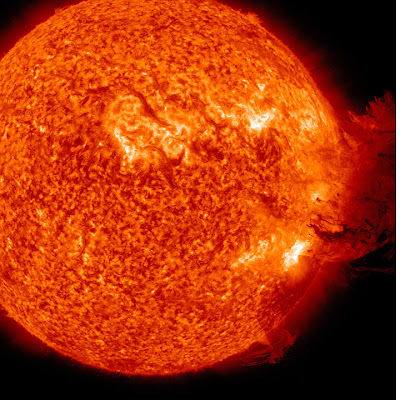George Mason University scientists discovered recently that a phenomenon called a giant magnetic rope is the cause of solar storms.
Confirming the existence of this formation is a key first step in helping to mitigate the adverse effects that solar storm eruptions can have on satellite communications on Earth.
The discovery was made by associate professor Jie Zhang and his graduate student Xin Cheng using images from the NASA Solar Dynamic Observatory (SDO) spacecraft.
Though the magnetic rope was believed to be the cause of these giant eruptions on the Sun, scientists had previously not been able to prove this phenomenon existed because of how quickly the rope moves.
However, through close examination of images taken by the Atmospheric Imaging Assembly (AIA) telescope on board the SDO, Zhang was able to pinpoint an area of the sun where a magnetic rope was forming.
The AIA telescope suite is able to capture images of the Sun every 10 seconds, 24 hours a day. This unprecedented cadence in time helped the discovery.
“The magnetic rope triggers a solar eruption. Scientists have been debating whether or not this magnetic rope exists before a solar eruption. I believe that the result of this excellent observation helps finally solve this controversial issue,” says Zhang.
A solar storm is a violent eruption from the Sun, sending billions of tons of charged material, also called plasma, into space at a speed of more than one million miles per hour. The cloud of plasma carries with it a strong magnetic field. When the magnetized cloud reaches Earth one to three days later, a huge amount of energy is deposited into the magnetosphere of the Earth.
Normally the Earth’s magnetosphere shields this harmful solar wind and protects the environment. However, a solar storm has the potential to disrupt the shielding effect and produce severe space weather, which can have harmful effects on a wide array of technological systems, including satellite operation, communication and navigation and electric power grids.
Zhang’s research will help in giving early warning about solar storms and help to minimize the damage done by space weather here on Earth.
“Understanding the eruption process of these storms will definitely help us better predict them,” says Zhang.
“We cannot prevent solar storms, just like we cannot prevent earthquakes or volcanoes. But the development of prediction capacity can help mitigate adverse effects. For instance, satellite operators can power-down key systems to prevent the possible damage to the systems.”
Subscribe to:
Post Comments (Atom)







No comments:
Post a Comment